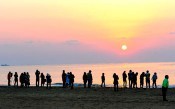
January 3, 2014 Ryukyu Shimpo
At 7:00 a.m. on January 1, many residents visited a beach at Henoko, Nago, to see the first sunrise of the year. It is the first New Year’s Day since Okinawa Governor Hirokazu Nakaima approved the Henoko landfill for moving the U.S. Marine Corps Air Station Futenma. If the government builds the new base, the beach will disappear, and instead, a ten-meter tall concrete wall will appear between a barbed-wire fence and the U.S. Marine Corps Camp Schwab. The residents made it a New Year’s resolution to protect this landscape at the beach, on which the sun cast rays.
At 7:15 a.m. when the sun was due to rise, they could not see it because cloud hanging over the horizon blocked their vision. About five minutes after, the sun began to appear from behind the clouds. The residents prayed to the morning sun and took pictures.
(English translation by T&CT)
Go to Japanese
[Similar Articles]
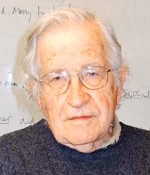
January 8, 2014 Ryukyu Shimpo
On January 8, leading scholars, peace advocates and artists from the United States, Canada, Europe, and Australia released a statement opposing the construction of a new US military base within Okinawa. The statement urges, “support the people of Okinawa in their struggle for peace, dignity, human rights and protection of the environment.” It calls for the plan to relocate the Futenma base to Henoko to be canceled and to return the base immediately to the people of Okinawa.
Initial signers of the statement include linguist Noam Chomsky, Academy Award-winning filmmaker Oliver Stone and Mairead Maguire, Nobel peace laureate who was awarded the Nobel Peace Prize for her work for peace and a nonviolent solution to the conflict in Northern Ireland. It is for the first time that so many influential people in the world have released a statement on the Futenma base issue.
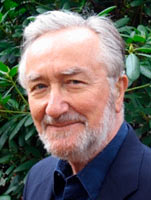
John W. Dower
There are also many other names given, such as John W. Dower, professor emeritus of history at Massachusetts Institute and Pulitzer Prize winner, Ann Wright, retired US Army Colonel and former US diplomat, Richard Falk, professor emeritus of International Law at Princeton University and the United Nations Special Rapporteur on Palestinian human rights, Daniel Ellsberg, Senior Fellow at the Nuclear Age Peace Foundation, Gavan McCormack, professor emeritus of the Australian National University who was awarded the Ryukyu Shimpo Ikemiyagi Shui Prize for promotion of international understanding of Okinawa and Canadian author and journalist Naomi Klein.
“We the undersigned oppose the deal made at the end of 2013 between Prime Minister Shinzo Abe and Governor of Okinawa Hirokazu Nakaima to deepen and extend the military colonization of Okinawa at the expense of the people and the environment,” the statement said. It mentioned the polls in recent years have been showing that 70 to 90 percent of the people of Okinawa opposed the Henoko base plan, and pointed out that “Governor Nakaima’s reclamation approval does not reflect the popular will of the people of Okinawa.” “The reclamation approval was a betrayal of the people of Okinawa,” the statement criticized the governor for breaking his election pledge to move the Futenma base outside the prefecture. “The base should have been returned to its owners after the war,” the statement said about the U.S. military stationed on the islands and the burden on the people since the war ended. The statement said, referring to the Futenma base, “any conditional return of the base is fundamentally unjustifiable.” It pointed out, referring to the approval of the landfill, “The new agreement would also perpetuate the long suffering of the people of Okinawa.”
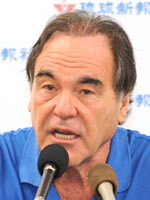
Oliver Stone
Speaking for the signers, Joseph Gerson, director of the Peace and Economic Security Program for the American Friends Service Committee, said the statement is intended to “rally international support for Okinawans in their inspiring and essential nonviolent campaign to end seventy years of military colonization, to defend their dignity and human rights, and to ensure peace and protect their environment.”
(English translation by T&CT)
PRESS RELEASE(PDF)
Statement Follows:
STATEMENT
We oppose construction of a new US military base within Okinawa, and support the people of Okinawa in their struggle for peace, dignity, human rights and protection of the environment
We the undersigned oppose the deal made at the end of 2013 between Prime Minister Shinzo Abe and Governor of Okinawa Hirokazu Nakaima to deepen and extend the military colonization of Okinawa at the expense of the people and the environment. Using the lure of economic development, Mr. Abe has extracted approval from Governor Nakaima to reclaim the water off Henoko, on the northeastern shore of Okinawa, to build a massive new U.S. Marine air base with a military port.
Plans to build the base at Henoko have been on the drawing board since the 1960s. They were revitalized in 1996, when the sentiments against US military bases peaked following the rape of a twelve year-old Okinawan child by three U.S. servicemen. In order to pacify such sentiments, the US and Japanese governments planned to close Futenma Marine Air Base in the middle of Ginowan City and move its functions to a new base to be constructed at Henoko, a site of extraordinary bio-diversity and home to the endangered marine mammal dugong.
Governor Nakaima’s reclamation approval does not reflect the popular will of the people of Okinawa. Immediately before the gubernatorial election of 2010, Mr. Nakaima, who had previously accepted the new base construction plan, changed his position and called for relocation of the Futenma base outside the prefecture. He won the election by defeating a candidate who had consistently opposed the new base. Polls in recent years have shown that 70 to 90 percent of the people of Okinawa opposed the Henoko base plan. The poll conducted immediately after Nakaima’s recent reclamation approval showed that 72.4 percent of the people of Okinawa saw the governor’s decision as a “breach of his election pledge.” The reclamation approval was a betrayal of the people of Okinawa.
73.8 percent of the US military bases (those for exclusive US use) in Japan are concentrated in Okinawa, which is only 0.6 percent of the total land mass of Japan. 18.3 percent of the Okinawa Island is occupied by the US military. Futenma Air Base originally was built during the 1945 Battle of Okinawa by US forces in order to prepare for battles on the mainland of Japan. They simply usurped the land from local residents. The base should have been returned to its owners after the war, but the US military has retained it even though now almost seven decades have passed. Therefore, any conditional return of the base is fundamentally unjustifiable.
The new agreement would also perpetuate the long suffering of the people of Okinawa. Invaded in the beginning of the 17th century by Japan and annexed forcefully into the Japanese nation at the end of 19th century, Okinawa was in 1944 transformed into a fortress to resist advancing US forces and thus to buy time to protect the Emperor System. The Battle of Okinawa killed more than 100,000 local residents, about a quarter of the island’s population. After the war, more bases were built under the US military occupation. Okinawa “reverted” to Japan in 1972, but the Okinawans’ hope for the removal of the military bases was shattered. Today, people of Okinawa continue to suffer from crimes and accidents, high decibel aircraft noise and environmental pollution caused by the bases. Throughout these decades, they have suffered what the U.S. Declaration of Independence denounces as “abuses and usurpations,” including the presence of foreign “standing armies without the consent of our legislatures.”
Not unlike the 20th century U.S. Civil Rights struggle, Okinawans have non-violently pressed for the end to their military colonization. They tried to stop live-fire military drills that threatened their lives by entering the exercise zone in protest; they formed human chains around military bases to express their opposition; and about a hundred thousand people, one tenth of the population have turned out periodically for massive demonstrations. Octogenarians initiated the campaign to prevent the construction of the Henoko base with a sit-in that has been continuing for years. The prefectural assembly passed resolutions to oppose the Henoko base plan. In January 2013, leaders of all the 41 municipalities of Okinawa signed the petition to the government to remove the newly deployed MV-22 Osprey from Futenma base and to give up the plan to build a replacement base in Okinawa.
We support the people of Okinawa in their non-violent struggle for peace, dignity, human rights and protection of the environment. The Henoko marine base project must be canceled and Futenma returned forthwith to the people of Okinawa.
January 2014
Norman Birnbaum, Professor Emeritus, Georgetown University
Herbert Bix, Emeritus Professor of History and Sociology, State University of New York at Binghamton
Reiner Braun, Co-president International Peace Bureau and Executive Director of International Association of Lawyers Against Nuclear Arms
Noam Chomsky, Professor Emeritus of Linguistics, Massachusetts Institute of Technology
John W. Dower, Professor Emeritus of History, Massachusetts Institute of Technology
Alexis Dudden, Professor of History, University of Connecticut
Daniel Ellsberg, Senior Fellow at the Nuclear Age Peace Foundation, former Defense and State Department official
John Feffer, Co-director of Foreign Policy In Focus (www.fpif.org) at the Institute for Policy Studies
Bruce Gagnon, Coordinator of the Global Network Against Weapons & Nuclear Power in Space
Joseph Gerson (PhD), Director, Peace & Economic Security Program, American Friends Service Committee
Richard Falk, Milbank Professor of International law Emeritus, Princeton University
Norma Field, Professor Emerita, East Asian Languages and Civilizations, University of Chicago
Kate Hudson (PhD), General Secretary, Campaign for Nuclear Disarmament.
Catherine Lutz, Professor of Anthropology and International Studies, Brown University
Naomi Klein, Author and journalist
Joy Kogawa, Author of Obasan
Peter Kuznick, Professor of History, American University
Mairead Maguire, Nobel Peace laureate
Kevin Martin, Executive Director, Peace Action
Gavan McCormack, Professor Emeritus, Australian National University
Kyo Maclear, author of Virginia Wolf
Steve Rabson, Professor Emeritus, Brown University/ Veteran, United States Army, Henoko, Okinawa, 1967-68
Mark Selden, a Senior Research Associate in the East Asia Program at Cornell University
Oliver Stone, Filmmaker
David Vine, Associate Professor of Anthropology, American University
The Very Rev. the Hon. Lois Wilson, former President, World Council of Churches
Lawrence Wittner, Professor Emeritus of History, State University of New York/Albany
Ann Wright, Retired US Army Colonel and former US diplomat
(In the alphabetical order of family names, as of January 7, 2014)
Go to Japanese
January 1, 2014 Ryukyu Shimpo
If I am asked, “What’s your favorite drink?” without hesitation I will answer “awamori.” A cold beer after a bath is also hard to resist, but a glass of cold water the morning after drinking a little too much tastes every bit as good.
In the dictionary we find the expression “a glass of water to relieve your thirst after sobering up tastes like honeydew.” Water also helps us recover from a hangover and makes us reflect on the previous night’s behavior. Would I be laughed at if I were to state that it is the drinker’s privilege to select the very best taste to enjoy?
Water used to appear in traditional New Year ceremonies in Okinawa. On the morning of New Year’s Day people would draw water known as “Wakamiji” or “Wakaubi,” and offer it to the God of Fire or a Buddhist altar. It is believed that this water possesses spiritual powers of rejuvenation. They would put some of the water on their foreheads in a ceremony known as “Ubinadi” as they prayed for the health of their family members.
The New Year is now upon us as aftershocks continue following a significant jolt to the system. Five days have passed since Okinawa Governor Hirokazu Nakaima approved the Henoko landfill. Voices of anger, surprise, disappointment and resignation to the fact have swept through the prefecture. We can hear them all, even those not clearly spoken.
Yet again a politician has had to make a “tough decision.” I can imagine the scene of them plotting to put pressure on the Okinawan people to divide us, cracking open a bottle as they look contemptuously upon the chaotic scenes in Okinawa. The people of Okinawa have been betrayed. The pain that has spread through the body from what we have just had to swallow is still with us. But a New Year has come. It is time for us to enlist the power of water.
We should neither despair nor give in. It is not the time to give up. Uchinanchu, let us walk together, standing straight and true, proud for all to see. Let us pledge to do so as we drink a glass of water on the morning of New Year’s Day.
(English translation by T&CT)
Go to Japanese
December 27, 2013 Ryukyu Shimpo
On December 26, the 3rd Amami Ryukyu World Natural Heritage Candidate Scientific Committee met at a hotel in Naha. The committee announced that it has chosen Amami, Tokunoshima, Iriomote Island and the northern municipalities of Kunigami, Ogimi and Higashi as candidates for the World Natural Heritage list. They will appear on UNESCO’s prospective list in the New Year, with the final decision being made no sooner than July 2016. The Ministry of Environment will submit a letter of nomination to the UNESCO World Heritage Centre by February 2015. They will work with the Forestry Agency to decide upon the special protection areas that will make up the core of the registration to the World Natural Heritage list. The ministry will also cooperate with the prefecture to speed-up the process of converting some areas into national parks.
There now also needs to be discussion with landowners, people in the forestry industry as well as dealings with the U.S. military’s Northern Training Area, which stretches from Higashi to Kunigami.
Amami and the Ryukyu Islands were divided into 17 areas, four of which were selected based on the inhabitation of endangered native species and the proportion of land covered by forest.
Both regions share a long history of isolation from the continent, have many native species of animals and plants, and have developed wet subtropical rainforests.
(English translation by T&CT and Hitomi Shinzato)
Go to Japanese
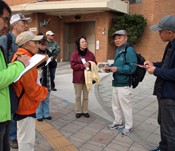
December 30, 2013 Ryukyu Shimpo
On December 20, the tour guide group that tells tourists about Okinawa City’s historical and cultural attractions walked around the Goya Crossroads where the Koza Riot occurred in 1970. Led by Soko Furugen, the leader of the group that keeps records on the Koza Riot, they visited sites such as Goya Crossroads and Gate Street along Route No. 330. They learned about the historical background to the riot and the turmoil in which the vehicles of U.S. military personnel were torched. Furugen was a witness to the turmoil. He said, “There was a strange order about things as they moved the vehicles into the middle of the road to set them alight. There was no looting or killing during the riot.”
“Okinawan people’s pent-up anger towards the U.S. forces flared up, but they did not use violence against U.S. personnel. The people of Koza, which had developed alongside the bases, saw American soldiers as fellow human beings. That they did not use violence towards human beings is a good example of how the Okinawan people have universal values,” Furugen stressed.
Naoko Kamura, 41, who took part in the tour, said, “It was the first time for me to hear about the riot from someone who was actually involved. It is difficult for my generation to understand what it was like in Okinawa under the control of the United States, but his story was easy to follow.”
Okinawa City Tourism Association is training tour guides as part of its tourism promotion project. A total of 35 tour guides have finished the training course.
(English translation by T&CT, Mark Ealey)
Go to Japanese
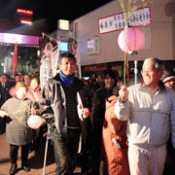
December 26, 2013 Yoshiki Nagahama of Ryukyu Shimpo
On December 25, the Amami City Memorial Event Executive Committee commemorated the 60th anniversary of the reversion of the Amami Islands to Japanese administration. There were speeches by youth groups from each region and performances by artists from Amami such as Chitose Hajime and Kosuke Atari. The people who gathered at Naze Elementary School in Amami City, Kagoshima Prefecture cast their minds back to the efforts of those who contributed to the island’s reversion.
According to the organizers, around 3,000 people gathered for the event on Amami Oshima, which has a population of 65,000.
From children to the elderly, many people came to the venue where the smell of smoke from the bonfire drifted through the air. Participants raised national flags and banners to celebrate the 60th anniversary of the reversion. Elementary school pupils brightened the venue with about 1,000 lanterns bearing messages such as “Congratulations on the 60th anniversary!” “Go for it Japan!”
Shingo Nashiro, head of the Tokunoshima Town Association Youth League, delivered a speech on behalf of youth groups. He said, “We will not forget how those before us came together to make history for our islands.”
On stage, Chitose Hajime said, “I would like to offer a song of gratitude to our ancestors,” and sang a song called “Kataritsugu koto.”
Fifty-eight-year-old Akemi Oda, a nurse from Amami City, said, “Ten years ago I heard from a patient of mine that people who went to Tokyo brought back Japanese textbooks for young people.” She went on to say, “I would like to pass on their passion.”
Just like the lantern parade held 60 years ago, people marched through the town with lanterns to celebrate the reversion. Michiko Tamotsu, who is from Amami City and currently lives in Naha City, returned home for the day. She joined in the parade and said, “We have our current life thanks to the efforts of our parents and grandparents. We need to learn our history.”
(English translation by T&CT, Megumi Chibana and Mark Ealey)
Go to Japanese
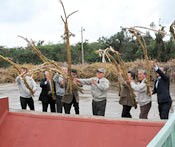
December 26, 2013 Ryukyu Shimpo
On Miyako-jima, the largest sugar production area in Okinawa, the Miyako Sugar Production Irabu Factory started operation on December 25.
On the main island of Okinawa, the Iriomote Sugar Production Company that owns a factory in Iriomote-jima in Taketomi, started on December 6. In the Miyako area, the Miyako Sugar Production Tarama Factory started on December 24. With this the sugar production season has officially kicked off in Okinawa.
Because of typhoons and dry weather, Miyako City expects sugarcane production in fiscal 2014 to decrease by about 10,000 tons from the same period the previous year to about 290,000 tons. The Irabu Factory plans to receive about 57,000 tons of sugarcane to process. On the first day, the factory received about 420 tons. The average sugar content before the inspection was 13.4 percent soluble sugar.
Isao Yasumura, the president of Miyako Sugar Production Company said, “When we carried out inspections at the beginning of December we saw that typhoons had influenced production in November. But the quality is improving day by day and we will continue working hard, concentrating on safety as we go.”
(English translation by T&CT, Mark Ealey)
Go to Japanese
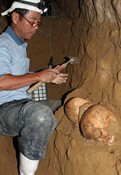
December 29, 2013 Yoshiki Nagahama of Ryukyu Shimpo
A volunteer collecting remains of war dead unearthed ten sets of human remains in an Imperial Japanese Army shelter in the Maeda district of Urasoe on December 28.
Nine of them had teeth, creating the possibility for the researchers to collect DNA samples. Some of the items found have names on them, such as “Kuniyoshi” on a razor and “Araki” on a triangle ruler. This may assist in identifying the remains.
Naha resident 62-year-old Zensei Takaesu found the remains. He said, “I think there are still more in there.”
Takaesu started excavating from July after gaining permission from the landowners. He has worked collecting remains with 71 people helping him along the way. All of the remains had little damage. The passage of 68 years since the end of the war has seen about 180 centimeters of dirt build up in the shelter and the walls calcify. Takaesu plans to put the earth dug out of the shelter back within the year.
Maeda was the scene of some of the most significant and bloodiest fighting during the Battle of Okinawa. More than 60 percent of the Japanese soldiers killed in the battle died at the front line that ran from Kakazu to Shuri and included Maeda.

A razor bearing the name "Kuniyoshi" and the bones thought to be of its owner.
In order to explain the situation to bereaved families when they receive the remains, Takaesu has carefully recorded the details of the remains and how they were unearthed. He said, “If I do not dig them out, they will lie there forever. When my grandchildren grow up I hope there will be no need for volunteers collecting remains of any war dead.”
(English translation by T&CT, Mark Ealey)
Go to Japanese
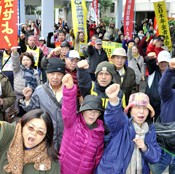
December 29, 2013 Ryukyu Shimpo
On December 28, peace groups and four opposition parties of the Prefectural Assembly held a protest rally against Governor Hirokazu Nakaima’s approval of the Henoko landfill. More than 700 people took part in the rally held in the square of the Prefectural Government Office Building. The protesters voiced their anger against the governor who had previously pledged to move U.S. Marine Corps Air Station Futenma outside the prefecture. They vowed to hold a protest rally on January 7 to expand their efforts to block the new base while questioning the responsibility of the governor. The Okinawa Prefectural Assembly is expected to hold an extraordinary session on January 9. Members of opposition parties, which hold a majority in the assembly, look as though they will aggressively pursue the governor.
Assembly member Satoru Nakasone (Social Democratic Party and Pro-constitution) said on behalf of the organizers in the rally held on December 28, “Our struggle begins from now. Let’s do our best to create an Okinawa that future generations will be proud of.” Once again he called for people to struggle to cancel the relocation. On December 27, all 21 members of the opposition parties requested that the chairman hold an extraordinary session in their joint names. That session will be held on January 9. Opposition members are ready to pursue the governor on his approval of the landfill application without explanation to the assembly.
Many urgent questions will be addressed. Opposition members are requesting that the governor attend. They will ask him to explain why he approved the landfill, his view of the legal standards for the environmental protection and if this is consistent with his election pledge. The neutral faction Souzo and ruling Liberal Democratic Party coalition partner Komeito agree with holding the session, and that the governor should explain his decision at the assembly.
On the other hand, members of the ruling Liberal Democratic Party assert that in terms of administrative procedures, there is no problem with the governor’s approval of the landfill. They will not recognize the adoption of a resolution and a written statement of opinion in protest against the governor. However, some of the ruling party members agree that some explanation from the governor is necessary. Chairman Masaharu Kina will call for the Assembly Steering Committee to discuss the extraordinary session and the attendance of the governor. That committee will meet on January 7. Opposition parties are also seeking to submit a protest resolution against the governor. Urgent questions to the governor will be posed because the proposer of the draft opinion has to answer questions from other assembly members. For this reason, the proposer needs to hear the governor’s explanation. Urgent questions are usually submitted in the case of a major accident or disaster.
(English translation by T&CT, Mark Ealey)
Go to Japanese
December 28, 2013 Ryukyu Shimpo
Okinawa Governor Hirokazu Nakaima has approved land reclamation work in the Henoko district of Nago in preparation for moving U.S. Marine Corps Air Station Futenma. With this he has effectively reneged on his pledge to move the base outside Okinawa.
This politically motivated move runs contrary to the will of the majority of Okinawan people and is a mistake of historic proportions. It is something that we simply cannot accept.
In the 2010 gubernatorial election campaign Nakaima promised to have the base moved outside Okinawa. When asked by a member of the media if his decision represents a withdrawal of that pledge, Nakaima said, “I have not changed my public commitments.” However we look at it, his explanation is willfully deceptive. It goes without saying that the Japanese government will interpret the governor’s decision as a green light for the relocation. Nakaima should acknowledge his responsibility and resign immediately. He should then call an election through which the Okinawan people can pass judgment on him.
Woeful travesty
In addition to the vagueness of Nakaima’s statement about compliance with laws, he is selective in his positive assessment of the central government’s suggestions for reducing Okinawa’s burden of bases. This is deceitful to say the least.
Nakaima commented that the Abe administration has been the most considerate of all cabinets towards Okinawa. He seems to have forgotten that the ruling Liberal Democratic Party headquarters forced its Okinawan branch and local Okinawan Diet members to withdraw their pledges to move the base outside Okinawa. The Okinawan people will not remember Nakaima as a governor who made a positive contribution to the prefecture.
On the matter of a reduction of the burden of bases on Okinawa, the idea of Futenma Air Station ceasing operation within five years is a “shared perception” or verbal agreement. Rather than referring to a fundamental revision of the U.S.-Japan Status of Forces Agreement Abe only stated that the government will “start negotiating” towards a new special agreement.
Similarly, on the topic of the MV-22 Osprey, Abe merely talks of transferring training flights to other parts of Japan. The 24 aircraft will continue to be deployed in Okinawa.
So in essence, the Japanese government has provided no answers to the core elements of the governor’s requests.
Nakaima’s decision to ignore the Okinawan people’s opposition to the Henoko relocation has significantly wounded their dignity.
His decision to effectively revoke the application in Okinawa of the universal values such as freedom, democracy and respect for basic human rights that the United States and Japan trumpet is humiliating. By rights he should have pointed out the double standards of the U.S. and Japanese governments, and called for democracy to be applied in Okinawa as well.
Nakaima sends out the wrong message by trading off approval of the Henoko landfill in order to affect the government’s policies to promote the Okinawan economy and base issues. Coverage of this by the Japanese and overseas media suggests that Okinawa is prepared to her soul for money. His bringing this about is sinful in the extreme.
There should never have been a political trade-off around the Henoko relocation. By rights the Japanese government is responsible for policies to promote the Okinawan economy and to reduce the prefecture’s burden of bases. For the people of Okinawa, Nakaima’s overrating Abe’s track record on this is a woeful travesty.
Japan sacrifices Okinawa once again
In his meeting with Abe on December 25, Nakaima said, “I think that Okinawa hosting U.S. bases contributes to Japanese security. We are now supporters of your administration. I am grateful for what you have done.”
We are excruciatingly uncomfortable with this. The governor would seem to have forgotten Okinawa’s tragic history in which huge numbers of its people died in the battle fought here. Without uttering a word of criticism of security policies heavily dependent on the military, Nakaima’s ravings essentially approve the U.S. and Japanese governments turning Okinawa into a military fortress. This is an act of sacrilege not only towards the Okinawans alive now, but also to those who died in the war, and to the generations yet to come. It is a crime of historic proportions.
If Nakaima’s statement of “support” means Okinawa serving as a military keystone in the “assertive pacifism” projection of military force espoused by the Abe administration, we cannot allow this to pass unnoticed. During the Battle of Okinawa, the Imperial Japanese Army sacrificed the Okinawan people in order to protect the main islands of Japan. We cannot allow the governor to grant approval for the people of Okinawa to be sacrificed once again.
The mission of the Okinawa governor is to do his utmost to protect the lives, property and living environment of the people. The governor should not treat Okinawan people badly nor help the U.S. and Japanese governments to impose colonial policies on Okinawa in order to divide its residents.
Representatives of the people of Okinawa, including members of the Prefectural Protest Rally Executive Committee, Prefectural Assembly and the 41 heads of the municipalities in Okinawa went to Tokyo. They handed a petition to the prime minister requesting the easing of the base-hosting burden. It also demanded that the U.S. and Japanese governments close and remove Futenma Air Station and move any replacement facility outside of Okinawa. The cancelation of the deployment of the Osprey to Okinawa was also included.
Governor Nakaima has betrayed the people of Okinawa – he must resign.
(English translation by T&CT, Mark Ealey)
Go to Japanese

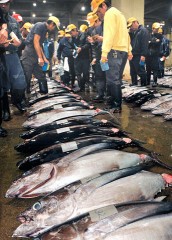









 Webcam(Kokusai Street)
Webcam(Kokusai Street)


